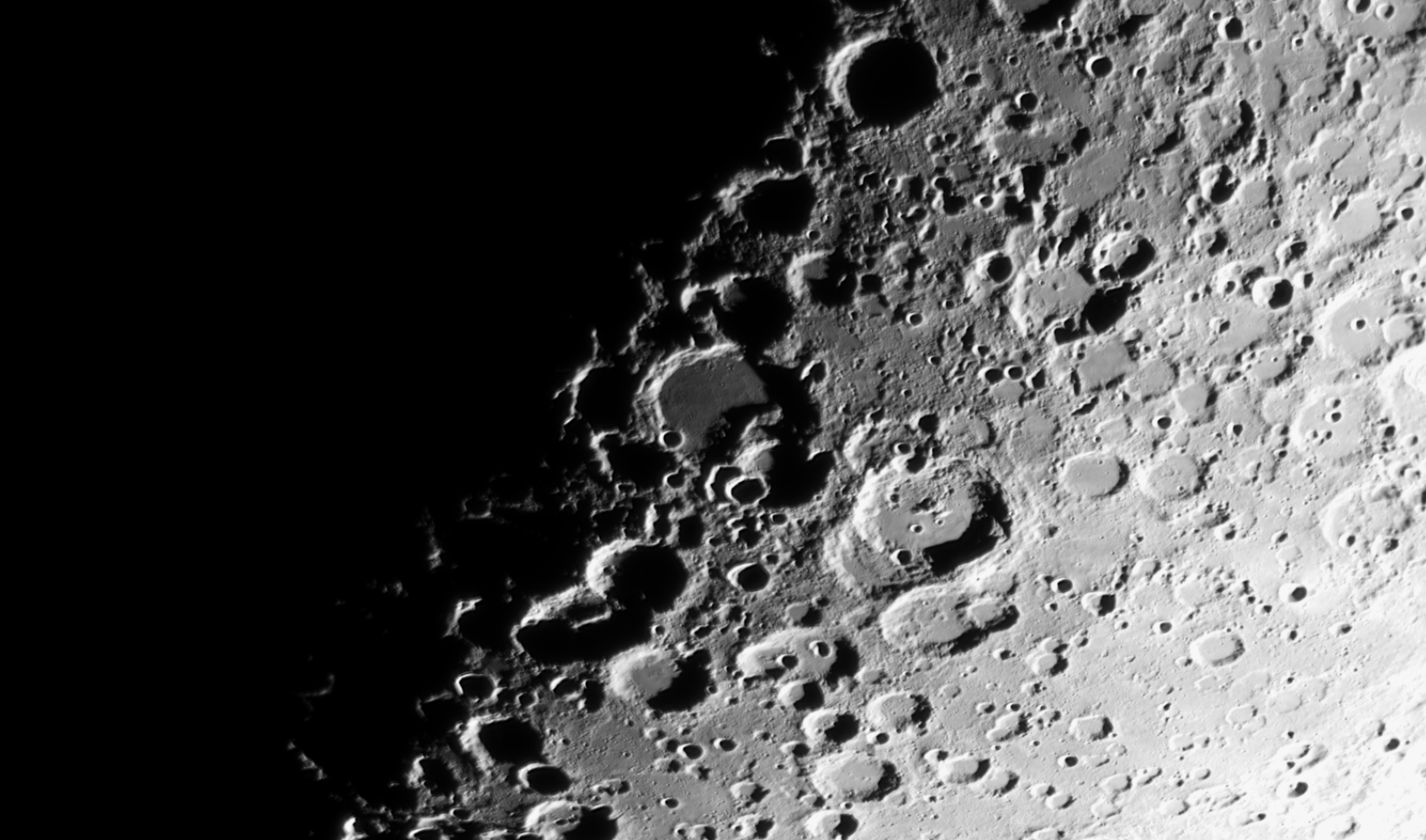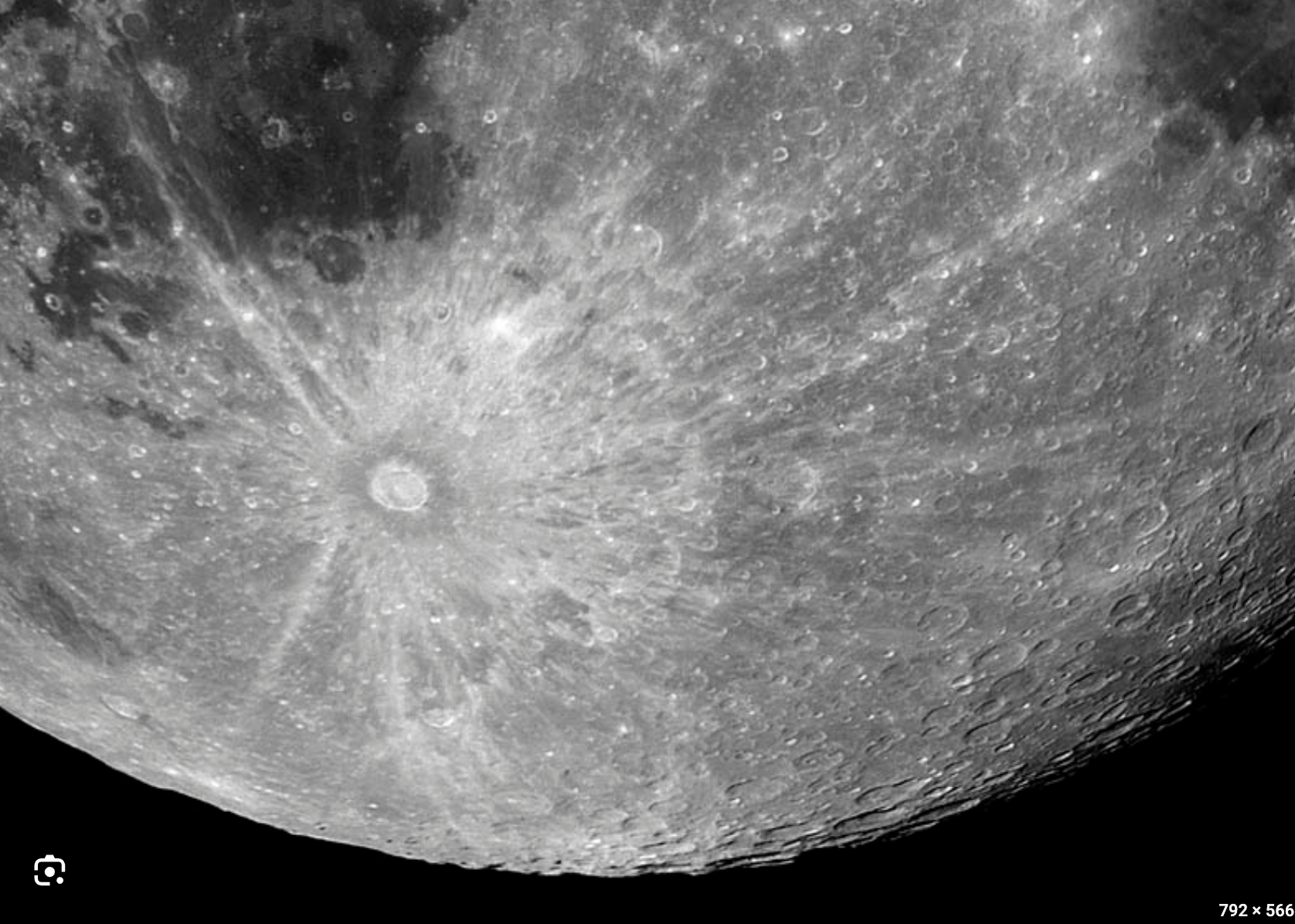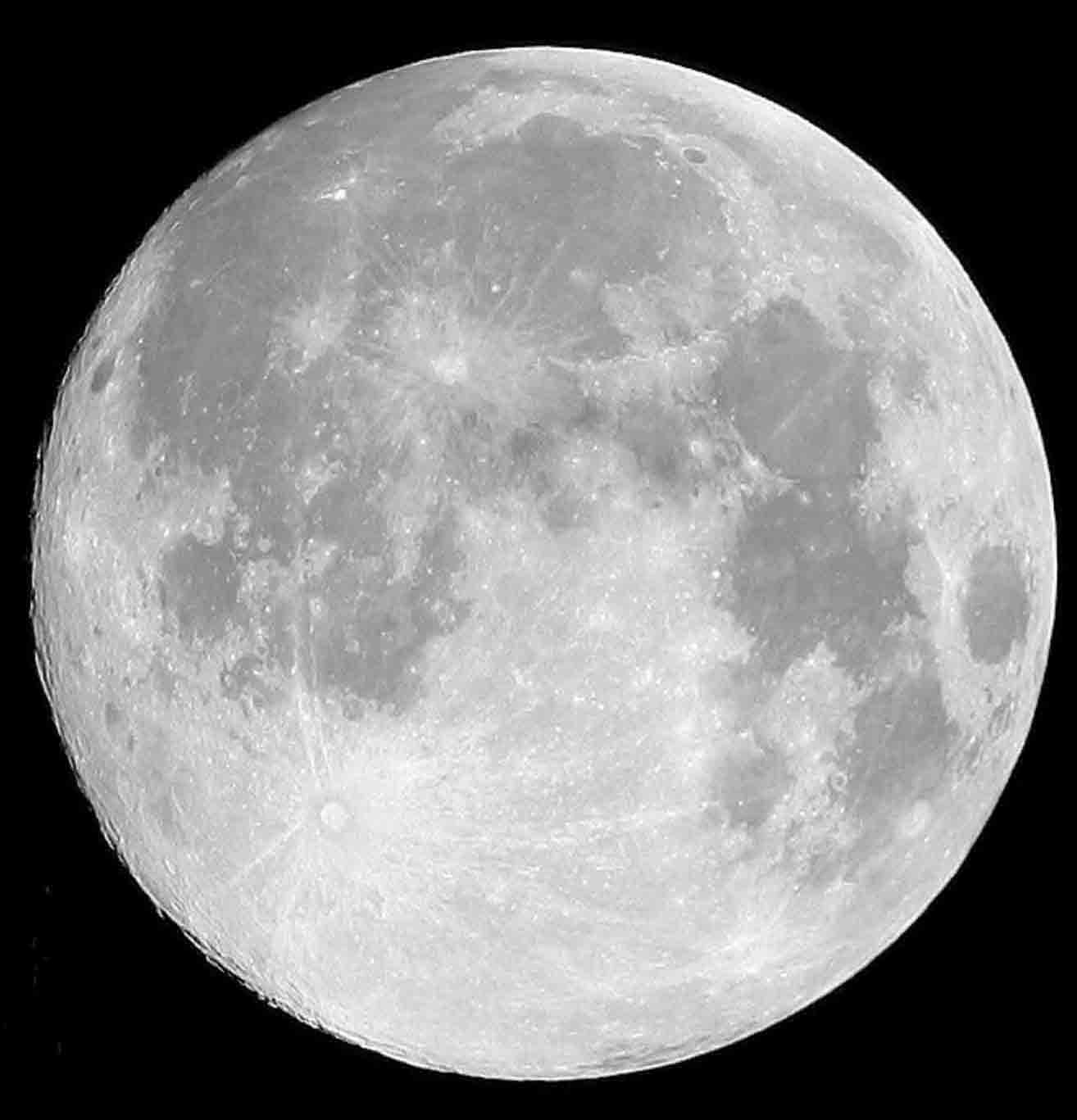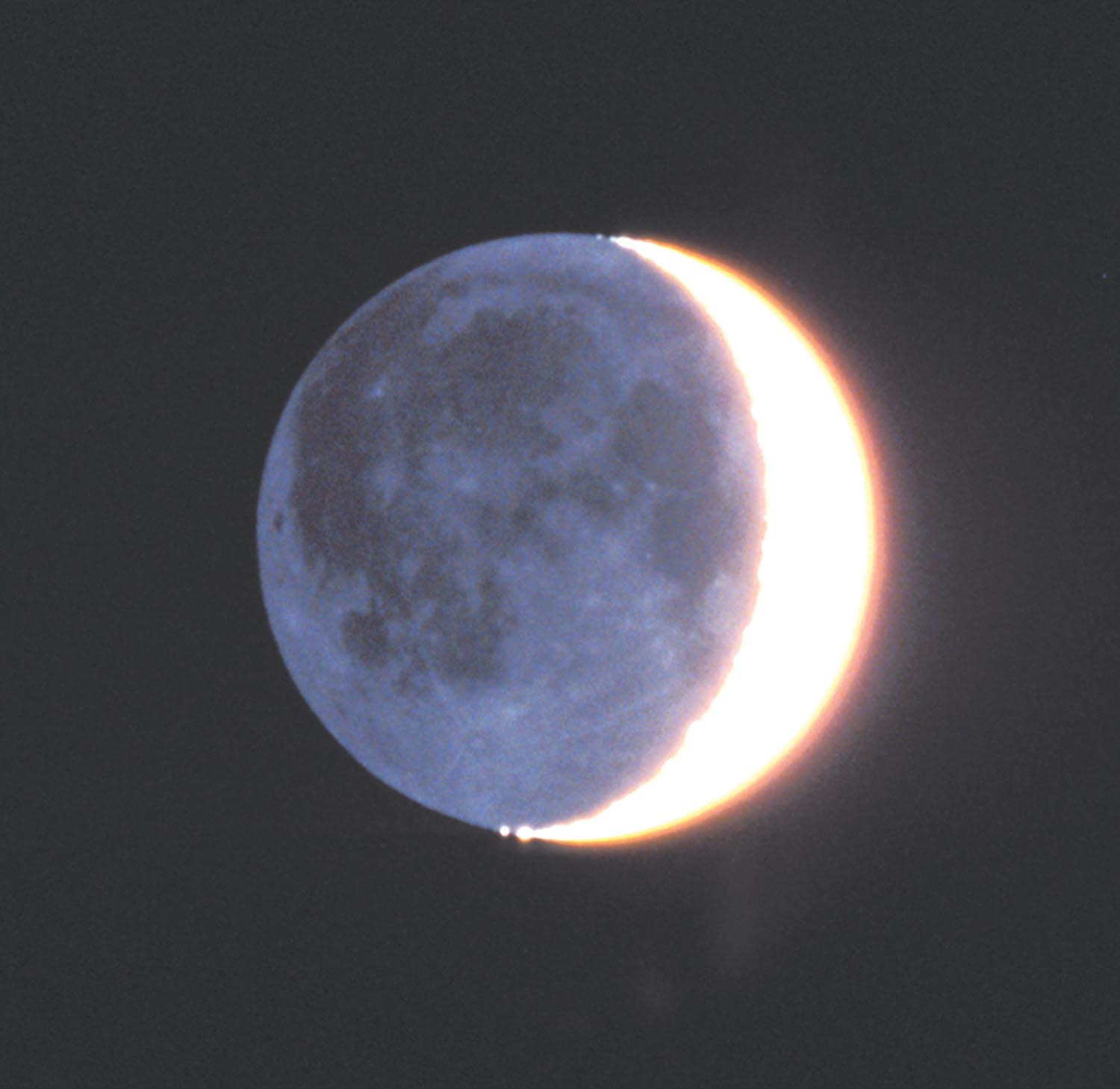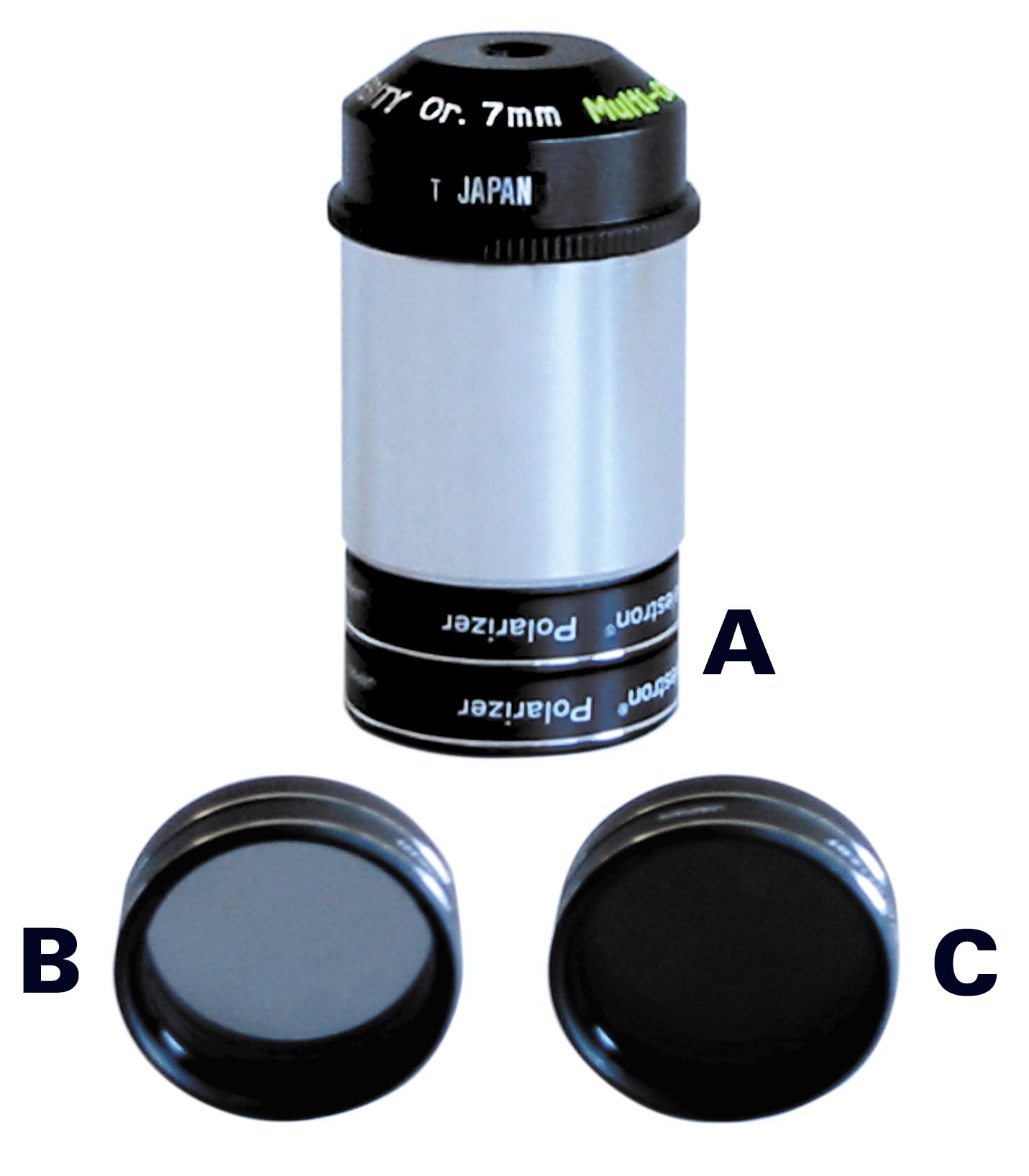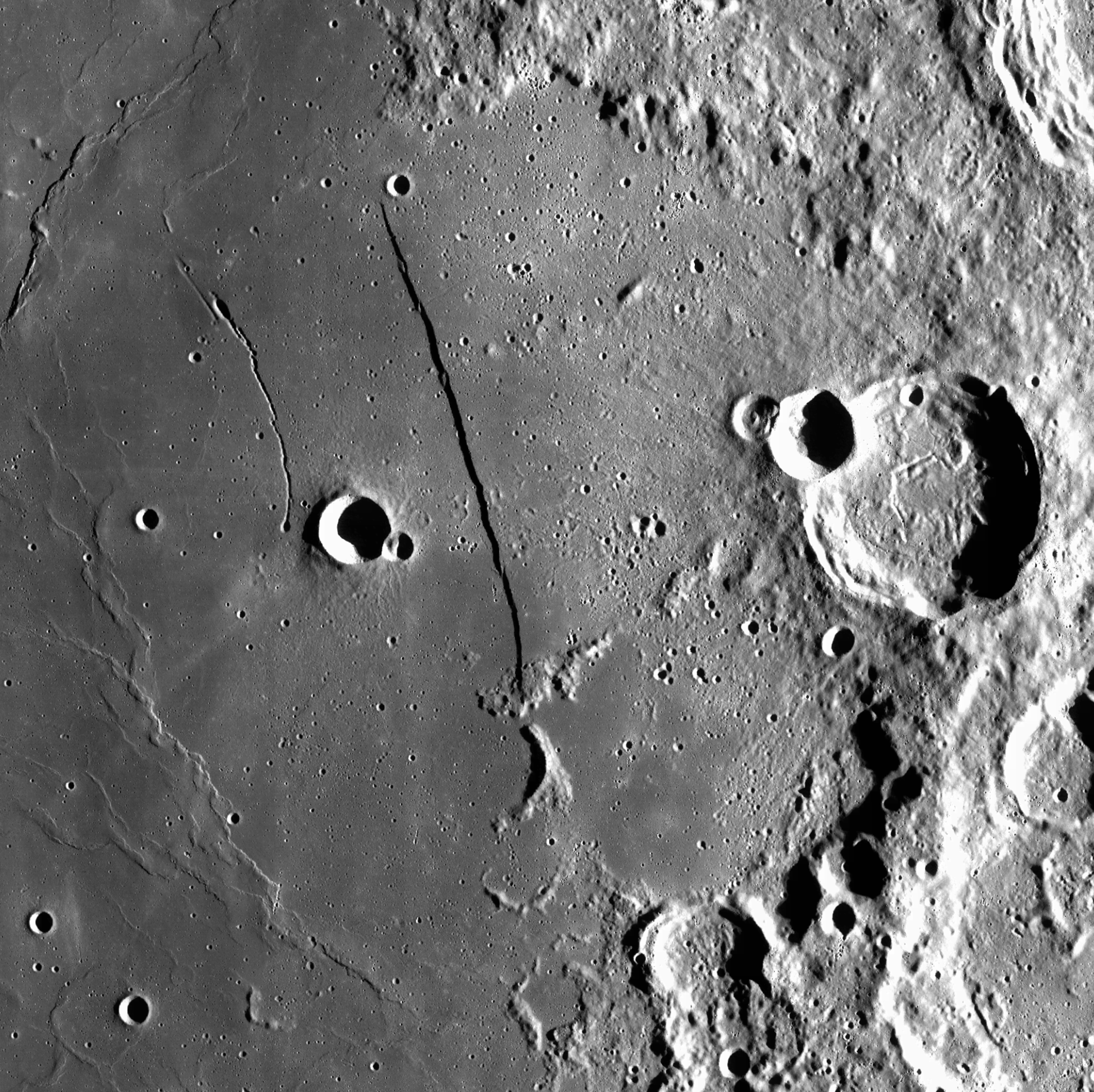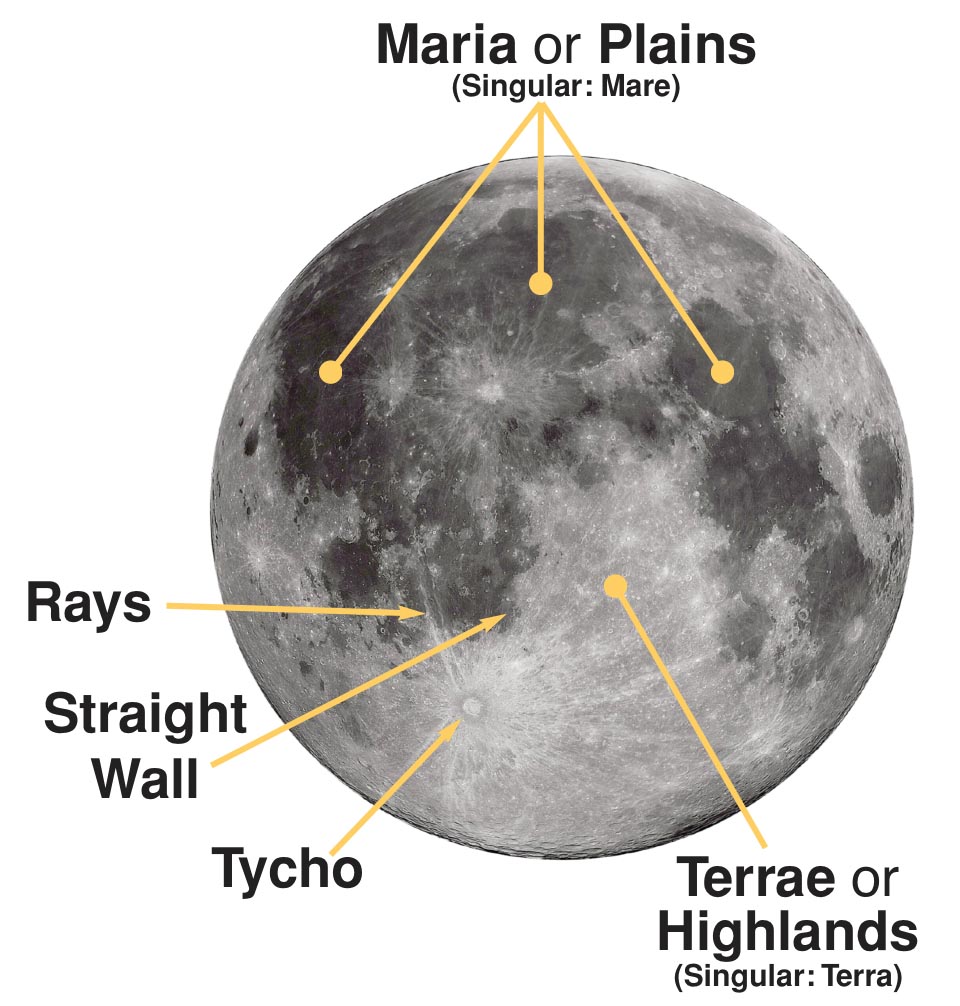Our Moon
Quick Facts about Our Moon
• Our Moon is the only natural moon of our planet Earth. It is also the 4th largest moon in our solar system.
Diameter: 2,160 miles
Mass: 1.23% of Earth’s mass
Density: 3.34 where water = 1
Gravity: 0.165 times that of Earth
Albedo (% of Sunlight reflected): 11%
Inclination of Axis to Orbit: 6.7°
Distance from Earth: 238,856 miles
Revolution about Earth: 27.322 days
Inclination of Orbit to Earth’s Orbit: 5.1°
Atmosphere: No atmosphere
Surface Temperature: 266° F in Sun to –300° F at night
There are many more facts about the Moon at the end of this page.
Most interesting features in a small telescope: Everyone is enthralled seeing craters at higher magnification around the terminator (the “line” that separates the light side from the dark side—visible in the picture to the right). On “good” nights when the air is steady and using magnifications of 100x to 250x, it really does seems like you are flying over these craters and the detail in and around the rims is amazing!
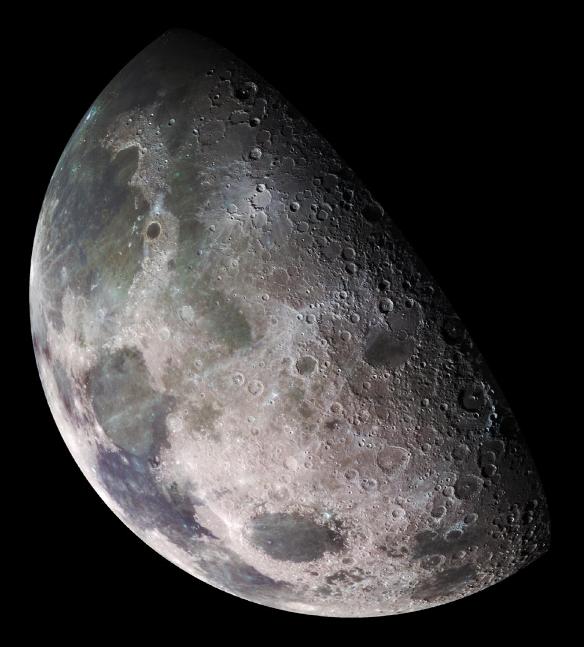
This image of the Moon shows some color because it was enhanced to bring out the slight differences in color that we cannot see with our eyes.

